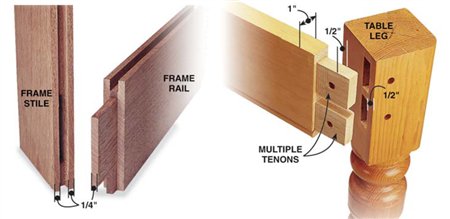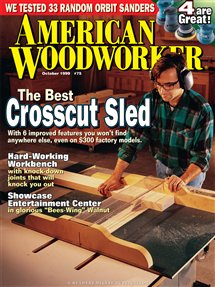We may receive a commission when you use our affiliate links. However, this does not impact our recommendations.
Q & A: Mortise and Tenon Dimensions
Q:
I would like to use mortise
and tenon joinery on a
project. Are there any rules
of thumb for sizing mortise
and tenon joints?
A:
Here are a few good
rules of thumb for designing
a mortise and tenon joint:
For strength, a tenon
should be at least twice as
long as it is thick. Thus, a
1⁄4-in. thick tenon should be
at least 1⁄2-in. long. The thickness
of the tenon is dependent
upon how wide the
mortise can be made.
In frame construction
where the stile and rail thickness
is the same, the tenon
should be no more than one-third of the total
thickness of the rail. Keeping the sides of the
mortise at least as thick as the tenon produces
the strongest possible joinery (see
photo above).
If the piece into which the mortise is cut
is wide enough to allow a set back, as when
a table leg is joined to an apron, then the
tenon width can be increased to as much as
half the thickness of the piece from which it
is cut (see photo above).
The width of the tenon is largely a function
of the width of the piece it is cut from. Try to
maximize the width for the glue surface while
leaving enough of a shoulder for mechanical
strength. If the tenon is more than 3-in. wide
it is best to cut multiple tenons to better
accommodate the expansion and contraction
of the wood across the grain (see photo above).
|
This story originally appeared in American Woodworker October 1999, issue #75. |
Here are some supplies and tools we find essential in our everyday work around the shop. We may receive a commission from sales referred by our links; however, we have carefully selected these products for their usefulness and quality.










